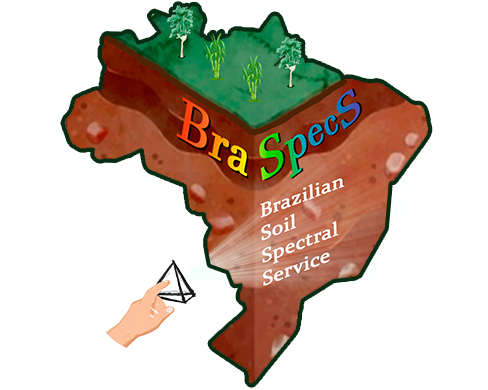Reference Laboratory Analysis
To generate the prediction models of soil attributes, initially it is necessary that all soil samples used have the results of reference laboratory analysis. From that, the vast majority of the work uses 60 to 80% of these samples to calibrate prediction models and in the remaining 20 to 40%, the models are validated. This validation is done by statistical comparisons between the result generated by reference laboratory methodology and the results of the prediction via spectral data. The reference laboratory analysis used in BSSL samples followed the methodology proposed by Teixeira et al. 2017. Sand, Silt, Clay, Organic Matter (MO), pH in water, Exchangeable Calcium (Ca), Exchangeable Magnesium (Mg), Exchangeable Potassium (K), Exchangeable Aluminum (Al), Phosphorus (P), Sum of Bases (SB), CTC, Saturation by Bases (V%) and Saturation by Aluminum (m%). Besides sulfuric attack results: Fe2O3, Al2O3, SiO2, TiO2, MnO e index ki.
TEIXEIRA, P. C.; DONAGEMMA, G. K.; FONTANA, A.; TEIXEIRA, W. G. (Ed.). Manual de métodos de análise de solo. 3. ed. rev. e ampl. Brasília, DF: Embrapa, 2017. 573p. Available at:
<https://www.embrapa.br/en/busca-de-publicacoes/-/publicacao/1085209/manual-de-metodos-de-analise-de-solo>. Access on: 02 out. 2020.

 pt-br
pt-br en
en